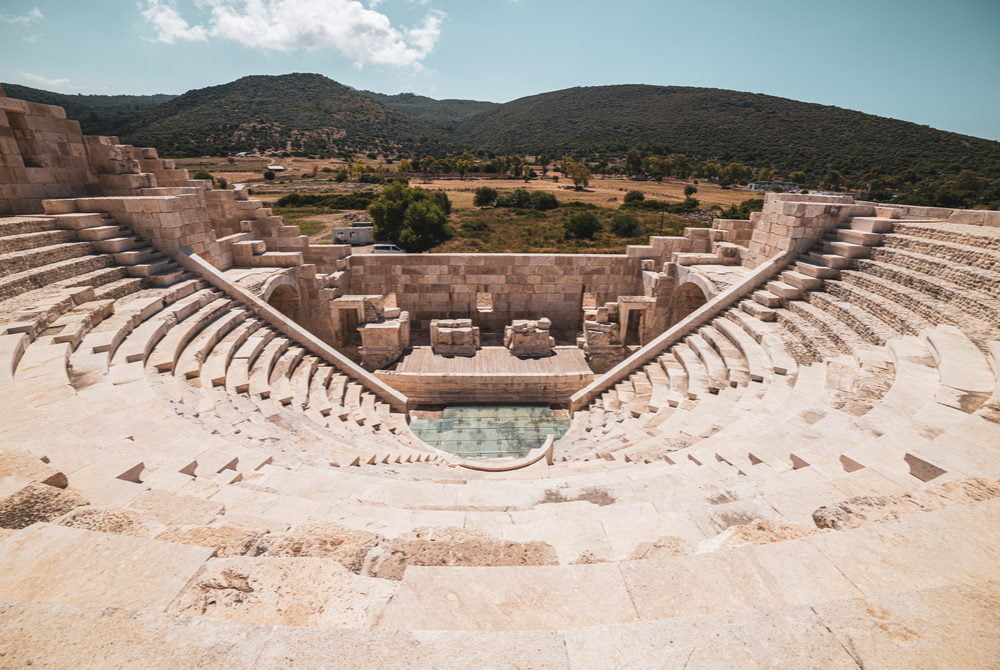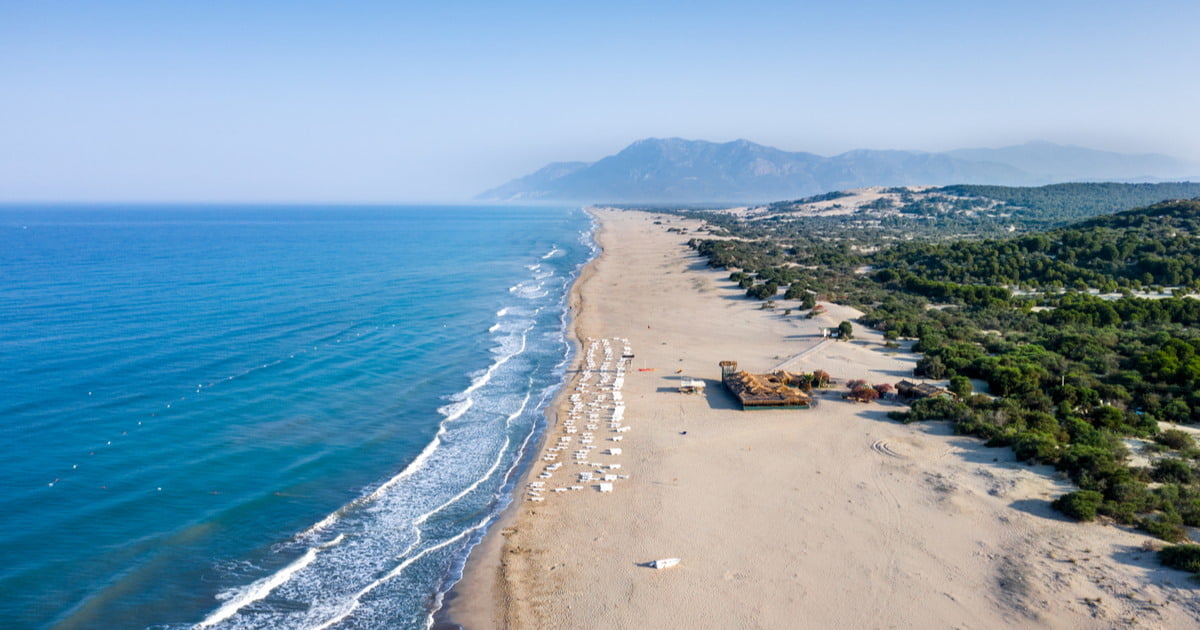Nestled on the southwestern coast of Turkey, the Patara Archaeological Site stands as a testament to the ancient civilizations that once thrived in the region. As you explore the remnants of this historical treasure, you’ll find yourself transported back in time, wandering among the awe-inspiring ruins of a once-great city. Join us on a journey of discovery as we delve into the intriguing history, remarkable architecture, and captivating stories that make Patara Archaeological Site a must-visit destination for history enthusiasts and curious travelers.
A Glimpse into the Past
The Origins of Patara
Patara, known as Pttara in ancient times, was an important port city and a prosperous hub of the Lycian civilization. With its strategic location along the Mediterranean Sea, it became a vital center for trade, connecting the eastern and western parts of the ancient world. Patara flourished from the 8th century BCE until the Byzantine era, leaving behind a rich tapestry of historical remnants.
A Hub of Culture and Knowledge
Patara was not only a thriving commercial center but also a hub of culture and knowledge. It was renowned for its renowned Oracle of Apollo, attracting visitors from far and wide seeking spiritual guidance and prophecy. The city was also the birthplace of the famous Greek historian and geographer, Strabo, who provided invaluable insights into the ancient world.
Exploring the Ruins

As you step foot into Patara Archaeological Site, prepare to embark on a mesmerizing journey through time. The site is a vast open-air museum, allowing you to immerse yourself in the architectural marvels and captivating stories of the past. Here are some highlights you won’t want to miss:
The Arch of Triumph
At the entrance of the site, you’ll be greeted by the majestic Arch of Triumph, a grand structure that once marked the gateway to the city. Admire its intricate carvings and imagine the bustling activity that unfolded through this arch during Patara’s heyday.
The Bouleuterion
Make your way to the Bouleuterion, the ancient council chamber where important decisions were made. Marvel at the well-preserved remains of this structure, including its seating area and architectural details. Try to envision the debates and discussions that took place within these walls, shaping the destiny of the city.
The Theater

One of the most impressive features of Patara Archaeological Site is its magnificent theater, which could accommodate up to 10,000 spectators. Climb the steps of this ancient amphitheater and take a seat, imagining the vibrant performances that once entertained the crowds. From theatrical plays to musical performances, the theater was a center of cultural gatherings and artistic expression.
The Roman Baths
Discover the Roman Baths, an opulent complex that provided a place for relaxation and rejuvenation. Explore the intricate mosaic floors, admire the well-preserved hypocaust system, and envision the ancient Romans enjoying the therapeutic benefits of the baths. This is an opportunity to witness the sophistication and luxury that prevailed in ancient Patara.
The Necropolis
Venture into the Necropolis, the city of the dead, where ancient tombs and mausoleums stand as a testament to the beliefs and rituals surrounding death in the ancient world. Marvel at the elaborate facades and architectural details of these resting places, reflecting the honor and respect bestowed upon the deceased.
Uncovering the Legends
Patara Archaeological Site is not only a place of ancient structures but also a canvas for captivating legends and stories. Let these tales transport you to a world of mythology and imagination:
The Legend of Apollo and Leto
According to Greek mythology, Patara was the birthplace of Apollo, the god of the sun, and his twin sister Leto. Legend has it that Leto sought refuge in Patara to give birth to her divine children, and the city became a sanctuary dedicated to Apollo.
The Oracle of Apollo
The Oracle of Apollo, located within Patara, was a revered place where visitors sought divine guidance and prophecies. It was believed that Apollo himself communicated through the oracle, offering insights into the future and providing spiritual solace to those who sought his wisdom.
The Beauty of Patara Beach
Patara Beach is a true hidden treasure awaiting discovery. With its natural beauty, archaeological wonders, and laid-back ambiance, it offers a beach experience that is both enchanting and enriching. Whether you’re a sun-worshipper seeking relaxation or an adventurer in search of history and natural marvels, Patara Beach has something for everyone.

Turquoise Waters and Soft Sand
As you step foot onto Patara Beach, you’ll be captivated by the stunning turquoise waters that stretch as far as the eye can see. The crystal-clear waves gently lap against the shore, inviting you to take a refreshing dip. The sand, renowned for its softness, is composed of tiny, golden particles that create a velvety carpet along the coastline. It’s the perfect place to sink your toes into and unwind.
Endless Stretch of Beach
One of the most striking features of Patara Beach is its incredible length. Stretching over 18 kilometers (11 miles), it is one of the longest beaches in the Mediterranean region. This vast expanse of coastline ensures that even during peak season, you can find a secluded spot to relax and bask in the sun. Whether you prefer to be near the beachfront cafes or seek a quiet oasis, the Beach offers ample space for everyone.
Protected Natural Reserve
Patara Beach is not just a beach; it’s a protected natural reserve that boasts an incredible ecosystem. The beach is nestled within the boundaries of the Patara National Park, home to diverse flora and fauna. It is a nesting ground for endangered loggerhead sea turtles (caretta carettas) who lay their eggs in the soft sand during the summer months. Witnessing these majestic creatures in their natural habitat is a truly awe-inspiring experience.
Planning Your Visit
To make the most of your visit to Patara Archaeological Site, here are some essential tips:
1. Getting There
- Patara Archaeological Site is located near the village of Gelemiş, approximately 70 kilometers southwest of Antalya.
- You can reach Patara by car or public transportation. Buses and dolmuş (shared taxis) operate regularly from Antalya, offering convenient access to the site.
2. Opening Hours and Tickets
- The site is open to visitors year-round, but it’s advisable to check the official opening hours as they may vary.
- Tickets can be purchased at the entrance, and there may be options for guided tours if you prefer a more informative experience.
3. Exploring the Site
- Wear comfortable walking shoes and dress appropriately for the weather, as you’ll be spending time outdoors.
- Consider bringing a hat, sunscreen, and water to stay protected and hydrated during your visit.
- A camera or smartphone will be handy to capture the breathtaking views and architectural wonders you’ll encounter.
Conclusion
Immerse yourself in the wonders of the past as you explore the remarkable Patara Archaeological Site. From ancient ruins and captivating legends to awe-inspiring architecture and cultural significance, this historical gem offers a journey through time that will leave you in awe. Discover the allure of the ancient world and create memories that will forever be etched in your heart at Patara Archaeological Site, a testament to the enduring legacy of human civilization.
